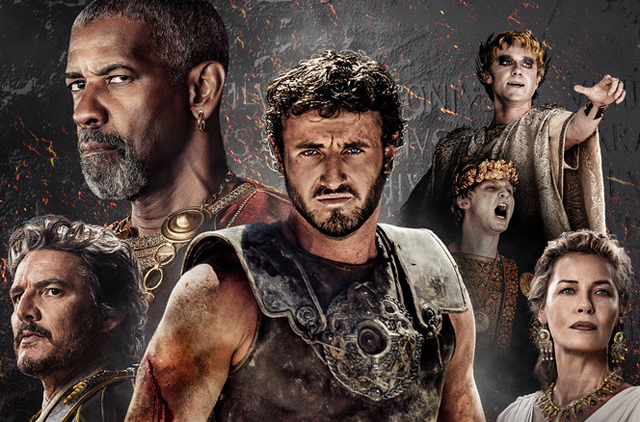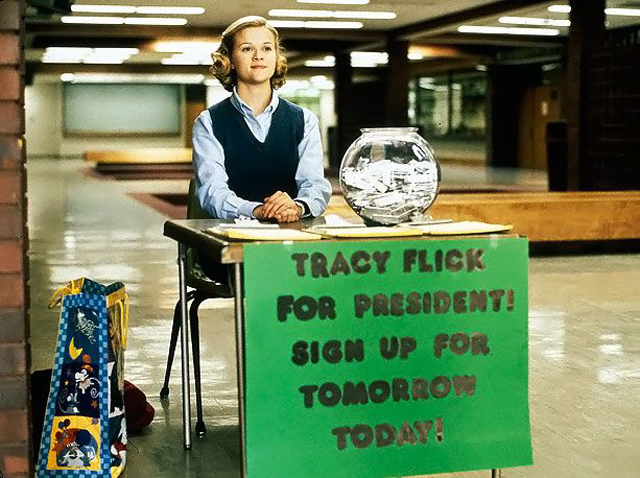
Disney Animation has gone through a bit of a reversal of fortune over the last 5 years. After experiencing a resurgence in the 2010’s thanks to the like of mega hits such as Frozen (2013), Big Hero 6 (2014) and Zootopia (2016), Disney was back in top form in the animation world and were looking for big things in the decade that followed. They finished the decade strong in 2019 with Frozen II (2019) which grossed well over a billion and a half dollars at the global box office. But, things were upended by the Covid-19 pandemic the following year. Raya and the Last Dragon (2021) which was slated for a Thanksgiving 2020 release was pushed back into the following spring, and given a hybrid streaming and theatrical release due to the theaters not being fully re-opened at that point. It was more than what Disney’s sister studio, Pixar, received as their movies just went straight to streaming with no wide theatrical plans. Raya did about as well as it could given the circumstances, but it was miniscule box office compared to what Frozen II pulled in. Later that year, Encanto (2021) fared better, but was still short of the $100 million threshold that Disney had before surpassed quite regularly. Not only that, but Encanto became a bigger hit on streaming than it did in theaters. The following two years weren’t any kinder to Disney’s box office woes. Their next film Strange World (2022) was DOA upon it’s release, and Disney’s ambitious 100th anniversary celebration film Wish (2023) was a failure with both audiences and critics. For a studio that was once the envy of all of Hollywood, they were now in a bit of a crisis mode. And animation fans were beginning to worry, because Disney had long been the gold standard for quality animation and their success would help uplift the industry as a whole. The lack of success for the animation studio could ultimately lead the corporate side of the company to invest less on newer projects and instead shift their priorities into more streaming and less theatrical
A lot of the problems for the studio stem from the fact that their slate of films during this pandemic period were all original projects that had no prior built in audience familiarity, and solely had to be sold on the Disney name alone. If things were running as smoothly as they were in the 2010’s, then these original titles could have had better luck at the box office. But with everything thrown into rebuild mode post-pandemic, the Disney brand alone wasn’t going to salvage these movies. In the end, only Encanto emerged as a modest enough hit for Disney. The failure of Strange World and Wish combined has especially put Disney in a bind. Pixar itself experienced the same downward trend, though their misfortunes were also self made by Disney’s misguided plan to shove them straight to streaming for 2 whole years. But thankfully Pixar was able to reverse their misfortunes this summer with their first, much needed hit of the decade with Inside Out 2 (2024). Now the highest grossing animated film of all time, Inside Out 2 reveals a strategy moving forward that may save Disney Animation too, though it’s one that’s unfortunate for the sake of progress in the medium. While Pixar has also put out a string of original films, their salvation was found in the release of a sequel to one of the their biggest past hits. For Disney, they may need to rely upon safe bet sequels to help salvage their reputation for a while, at least until they can prove to the corporate side that Animation is a medium of filmmaking that is still worth investing in. But what movie sequel would work in this case? Well, for Disney, the best barometer for knowing what sequel to make came from how their past films have been performing since release on their new streaming platform Disney+. And one film in particular that has consistently outperformed the rest, and has become one of the most viewed movies not just on Disney+ but on all streaming platforms in general, is the 2016 hit film Moana. Hoping to bank on Moana’s high profile with fans in order to generate some much needed box office momentum for the studio, Disney has quickly rolled out Moana 2 for this Thanksgiving weekend. The only question is does it live up to it’s predecessor, or is it already lost at sea?
Moana 2 takes place a few years after the events of the original. Moana (Auli’i Cravalho) has been sailing from island to island searching for signs of other tribes that populate the numerous islands of the vast ocean. While her search has proved to be fruitless for the most part, she does find a pottery fragment on one deserted isle, proving that there are other tribes still within reach. She returns back to her home island of Motunui, where her mother and father Tui and Sina (Temura Morrison, Nicole Scherzinger) both still reside, plus her baby sister Simea (Khalessi Lambert-Tsuda). While sharing her findings, she is sent a message from her ancestors about a sunken island named Motufetu that once connected all the ocean currents together and was destroyed by a vengeful storm god named Nalo, thereby keeping all the people of the ocean separated. Moana now seeks to find Motufetu, and assembles a crew to sail with her, heading towards an island that no mortal can find. On her boat, she has brought Loto (Rose Matafeo), a crafty shipbuilder; Kele (David Fane), a disgruntled old farmer; and Moni (Hualalai Chung), a resourceful historian, as well as her animal companions Pua the pig and Hei Hei the rooster. While neither she nor her crew have any idea where this mythical island may be, she does have a good idea of someone who might; her old friend, the demigod Maui (Dwayne Johnson). Unfortunately, Maui himself has been imprisoned by one of Nalo’s enforcers, the demigoddess Matangi (Awhimai Fraser). Can Moana rescue her powerful ally and get him to use his mighty fishhook to lift Motufetu out of the sea in defiance of Nalo’s curse and help reunite all the islanders that have been walled off from one another?
Moana 2 has a lot of pressure riding on it, given the state of Disney Animation at the moment, as well as the high expectations of an audience that treats the original as a beloved classic. Sequels can always be a gamble, even when they are safe bets when it comes to audience familiarity. One thing that should be noted about this movie is that it didn’t start out as a film at all, but rather began it’s production planned as a mini-series for the Disney+ platform. It was only at the 11th hour that Disney decided to re-work the program into a single film. It makes sense, because given the enormous popularity of the first movie both in theaters and on streaming, that having a theatrical roll-out would be more beneficial in the end for the project. This is definitely a huge reversal of Disney’s pandemic era plans, which put streaming above all else. You have to wonder if Disney left a ton of money on the table by going all in on streaming rather than building their brand up again through theaters. The downside though is that bringing something from streaming to theatrical has it’s drawbacks too, as the quality of the product might take a hit. Going from a story meant for multiple parts and trying to force it into a theater friendly run time under 2 hours is a difficult task, especially late in the game, and I would be lying if I said that some of those issues are visible in the finished film that we do get. But, does it make the overall movie bad? Not at all. While it is far from perfect, and also less successful than it’s beloved predecessor, it still manages to function as a solid entertaining adventure. If the movie has a fatal flaw, it’s that the truncated story feels like just that; something that was planned to be much larger in it’s original plan, but was reduced to just the bare minimum in it’s switch to theatrical.
The film definitely misses some of the key ingredients of the first movie. For one thing, it doesn’t have the deft guidance of legendary filmmakers at the helm anymore. The original Moana was directed by Disney Legends John Musker and Ron Clements in what would be their final film for Disney Animation before their respective retirements, culminating over 30 years of work at Disney that included classics like The Little Mermaid (1989), Aladdin (1992), and The Princess and the Frog (2009). Moana 2 has an entirely new team of directors behind it. Given the difficult transition that this movie faced, I do think the new directors Jason Hand, Dana Ledoux Miller and David Derrick Jr. did a commendable job of trying to make the film live up to original. While they don’t have the same level of experience as Ron and John, they still keep the overall vibe of Moana’s next chapter feel tonally consistent. While the episodic nature of the film belies it’s original format, and at times feels underdeveloped, there are still plenty of exciting big moments that have that right epic heft to them. An encounter with a giant clam in the middle of the ocean is an especially impressive moment that certainly feels right at home on the big screen. One of the things that definitely helps this movie is that it maintains the same screenwriter Jared Bush, who just recently was announced as the new Chief Creative Officer of Disney Animation after the departure of Jennifer Lee. Bush never looses the thread of the story, even as he had to cut down so much of the original plot in order to re-work this into a film. The movie puts it’s focus on Moana and her journey, which is what the film needs the most, although character development is unfortunately minimal, as she doesn’t grow much as a character here compared with the original. It’s essentially just a further adventures kind of story and nothing too groundbreaking apart from that. Still, the movie doesn’t reflect poorly on what had been built before. It’s just more of the same. That may be enough for some, but it will probably also disappoint many other audiences too who are expecting something that blows them away like the first movie did.
One of the other unfortunate aspects of the film where it falls short of the original is in the music. The original was blessed to have the talents of Lin Manuel-Miranda working as the songwriter, just fresh off of his record-setting run of the Broadway musical Hamilton. His songs for the original Moana have likewise become huge hits for Disney, earning their place on the charts as well as becoming standards in many people’s go to play lists. The new songs written for Moana 2 are not what I would consider awful, but they are far from memorable like the Lin Manuel-Miranda songs. The new songs were written by newcomers Abigail Barlow and Emily Bear and are at best serviceable to the story, but they definitely won’t be anyone’s new favorites in the years ahead. But, even if the songs are subpar, the performers are still giving it their all when performing them. Auli’i Cravalho particularly remains as powerful a singer as she was in first film. The sequel thankfully sees her return to the role, along with all the other voice actors from the original. One of the things that definitely helps Moana 2 in the overall picture is just how good Moana and Maui’s relationship remains enjoyable to watch. Auli’i and Dwayne Johnson may not have recorded their lines together, but their characters’ chemistry is still just as strong as ever, and both are great to listen to throughout the whole movie. Johnson even gets some surprisingly heavy moments to work with in this film, and he does a remarkable job there too along with all of his humorous moments. The downside of the re-working of the film is that all of the new characters feel like their development got heavily truncated. The characters themselves are not particularly bad, but their purpose in the story just feel superfluous with all their scenes left on the cutting room floor. The worst example of a character that got especially truncated is the character Matangi. It feels like she was being set up to be much more of a villain in this story than she ends up being. She even gets what sounds like a villain song. But, not long after we first meet her, she just as quickly disappears, and we don’t even see her at all in the climatic third act. The Moana/ Maui dynamic still thankfully carries the weight of the film, but it does feel like a lot was lost in transition with all of the other characters, and that’s unfortunate given that a few of them could’ve developed into something really interesting.
One thing that definitely doesn’t feel underwhelming about the movie is the animation. Even when it was under development as a streaming series, Moana 2 was always going to be worked on by the same team at Disney Animation that works on all their theatrical films. The character animation is especially on point, as Moana, Maui and all the other islanders all remain wonderfully expressive. I also love what they do with the animals too, especially Hei Hei, whose realistic chicken like movements still remain hilarious in the context of the movie scenes that he’s used in. But the movie also ups the ante a bit from the first film with regard to it’s sense of scale. The aforementioned encounter with the giant clam is an especially harrowing moment, as is the climatic confrontation with Nalo at the very end. The stakes definitely feel higher as a result, and the animation team makes it all look very impressive. The only downside is that Moana 2 loses the more cinematic widescreen presentation that the first film had in favor of a more streaming friendly 2.00:1 aspect ratio. The film still feels big, but the widescreen format might have also helped to reinforce that feeling on a big screen a bit more. At the same time, there are some great animation touches throughout. While the songs themselves are forgettable, the staging of them is still spectacular. Matangi’s song in particular has some great trippy visuals thrown in, with a lot of the colors going wild in that sequence. Maui’s song is also visually dazzling, although that one isn’t as uniquely visual given that it echoes a lot of the same style as his song “Your Welcome” from the first Moana. It’s not exactly a huge step ahead in animation from anything else Disney has made recently, but the last time Disney went experimental, we got Wish, so it’s not exactly a bad thing right now for Disney to keep doing the things they are good at while they rebuild their brand. And in terms of the animation here, the execution is key and Moana 2 is undoubtedly beautiful, if familiar, achievement for the Disney Animation team.
I get the feeling that people will be mixed with their feelings on this film. Sure, the movie delivers on everything we’d expect for another adventure with Moana and Maui, but it doesn’t deliver on anything more than that. It is the very definition of a safe sequel; it does the bare minimum without contributing much more. It’s chopped up storyline may also frustrate people expecting to find a more engaging plot as well. For many critics, this will be regarded as a disappointment. For me though, I am filtering this mostly through my experience with Disney movies as a whole. Is it a downgrade from the first Moana? Objectively yes, but not by a lot. For me, I did still have a good time watching it, mainly because I like the characters and the performances that the actors put into them, especially Auli’i Cravalho as the titular heroine. As long as they got that right, along with some stunning animation, I would still put this as a movie I would recommend. I certainly thought it was lightyears ahead of the soulless Wish that we got last year. And as far as sequels to Disney movies go, this is also a big improvement over the disappointing Frozen II. It does enough stuff right to make it serviceable companion piece to the first film, even if it falls short as a successor. The movie definitely leaves room open for another sequel, and my hopes is that by developing it from the beginning as a theatrical film that they’ll avoid the pitfalls that befell the project in it’s late transition from series to movie. Regardless of what I think or what other critics think, this movie is almost certainly critic-proof and is going to make a ton of money over the holidays. And that in the end is what Disney was hoping for; banking on the familiarity of the Moana brand to help boost this new film in theaters. The downside is that Disney may become too comfortable with sequels driving their creative output instead of original films. But, if Moana 2 can help reverse the fortunes of the studio, then maybe they might be able to balance new titles along with more sequels in the future. That the hope anyway. For now, it’s a worthwhile trip across the seas watching the further adventures of Moana on the big screen, and it’ll be exciting to see how much further she will go.
Rating: 7.5/10




